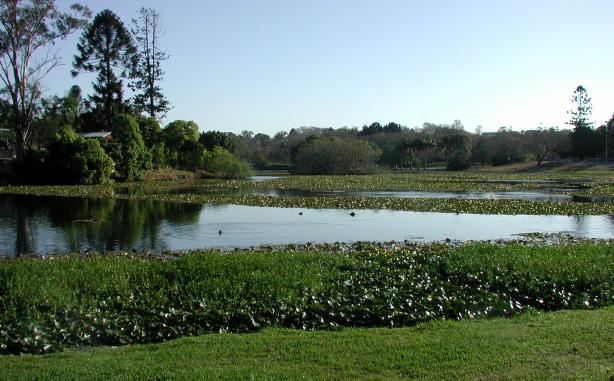
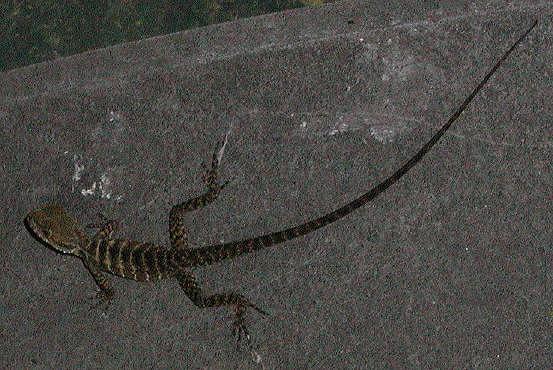 Physignathus lesueurii, Eastern Water Dragon
Physignathus lesueurii, Eastern Water Dragon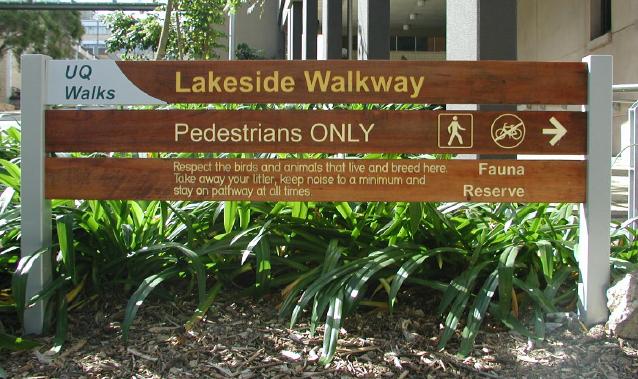 In early September, the University of Queensland installed new walkways at various
points around campus. One of the nicest is near the pond (not lake as advertised here, see
below)
on campus. A number of birds and
other animals can be seen near the pond at all times of day.
In early September, the University of Queensland installed new walkways at various
points around campus. One of the nicest is near the pond (not lake as advertised here, see
below)
on campus. A number of birds and
other animals can be seen near the pond at all times of day.

 Physignathus lesueurii, Eastern Water Dragon
Physignathus lesueurii, Eastern Water Dragon
Class: Reptilia Order: SquamataRight: A juvenile Water Dragon.
Adults can have a body length of 23 cm and a total length of 80 cm. There is a crest of spines from the neck down onto the tail. They are common along Brisbane waterways, creeks, and drains (where this one was seen). Rocks, logs, or branches near the water's edge are favoured locations.
Middle: An older, but by no means full-grown Water Dragon.
Bottom: Adult Water Dragon.
All photographed near the Lakeside Walkway.
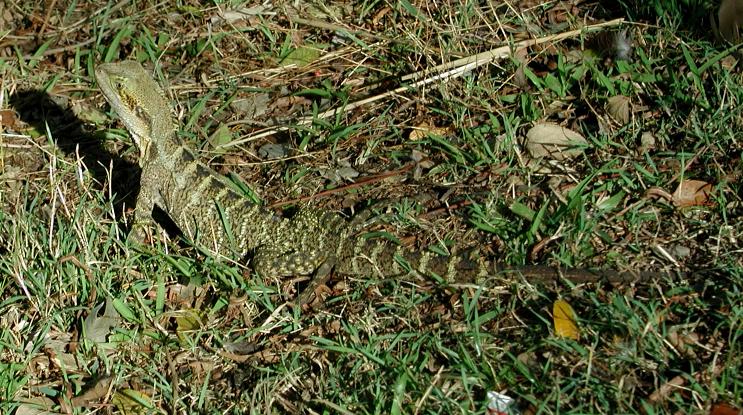
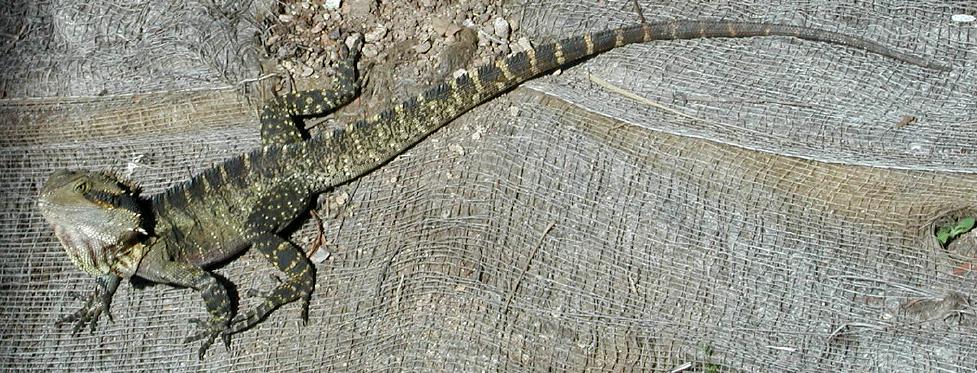
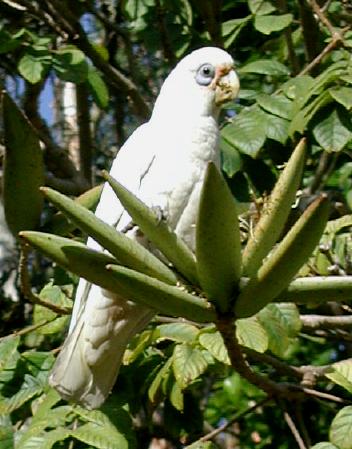 Cacatua pastinator, Little Corella
Cacatua pastinator, Little Corella
Class: Aves Family: CacatuidaeA medium sized white cockatoo with short tail and conspicuous grey/blue eye ring. The beak is white and is surrounded with a pale red colouration. They usually nest in large hollow limbs or holes in trunk 3-10 m above ground. Both sexes are involved in nest preparation, incubation of the eggs, and care for the young.
Less common in Brisbane, they are abundant and widespread in the far north and arid interior of mainland Australia. Their favoured habitat is arid open country, including open forest, scrubland, savannah, usually near water. Their diet consists of seeds (this one was eating seeds from the pod on this tree) bulbs, fruit and insects. Length: 42 cm.
Photographed near the Lakeside Walkway.
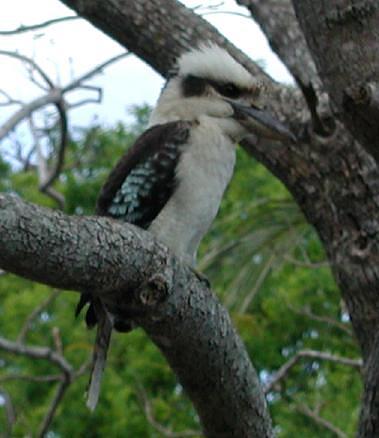 Dacelo novaguineae, Laughing Kookaburra
Dacelo novaguineae, Laughing Kookaburra
Phylum: Chordata Class: Aves Family: AlcedinidaeThe Laughing Kookaburra is the Australia's largest kingfisher. They have a loud, maniacal laughing call and are often heard in "chorus." They feed mainly on reptiles and large invertebrates. They are common in woodlands and forests in eastern Australia and are often seen in pairs. Length: 46cm.
Photographed near the UQ Pond.
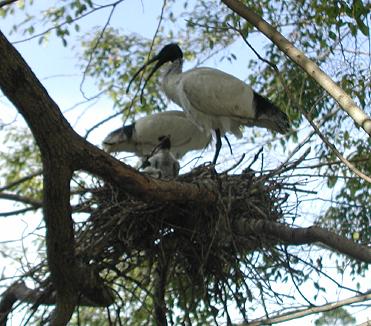 Threskiornis molucca, Australian White Ibis, Sacred Ibis
Threskiornis molucca, Australian White Ibis, Sacred Ibis
Phylum: Chordata Class: Aves Order: Ciconiiformes Family: ThreskiornithidaeLength 75 cm. The body of the ibis is white with a black head and throat, a long curved black bill, and black plumes and feathers near tail. They are common throughout eastern Australia in grasslands, wetlands, and parks.
Left: These adults were caring for several young in a nest near the UQ Pond.
Photographed along the Lakeside Walkway.
 A Sacred Ibis photographed by the UQ Pond.
A Sacred Ibis photographed by the UQ Pond.
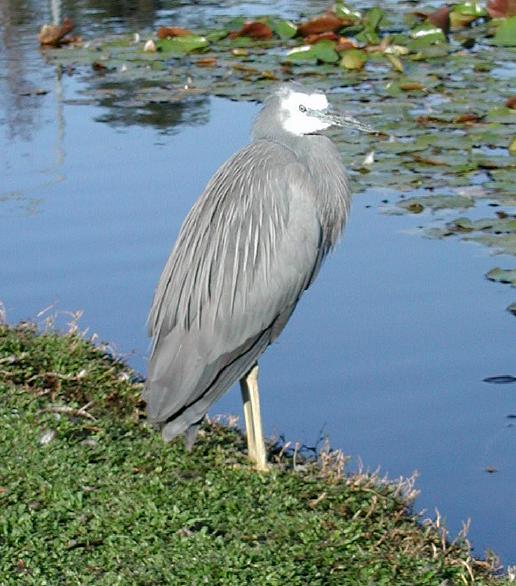 Egretta novaehollandiae, White-faced Heron or Blue Heron
Egretta novaehollandiae, White-faced Heron or Blue Heron
Phylum: Chordata Class: Aves Order: Ciconiiformes Family: ArdeidaeThe upper part of the White-faced Heron is a blue grey, with a white face (no surprise there), dark-grey bill, and yellow legs. They are seen in and around coastal freshwater lakes, lagoons, estuaries, mintertidal mudflats, magroves, and pastures. Their diet consists mainly of insects, larvae, molluscs, and occassionally small mammals or reptiles.
The White-faced Heron is the most common heron in Australia and its distribution is country-wide wherever there is suitable habitat. Its distribution also includes New Zealand, New Guinea, New Caledonia, and parts of Indonesia. Length: 65-70 cm.
Photographed near the UQ Pond.
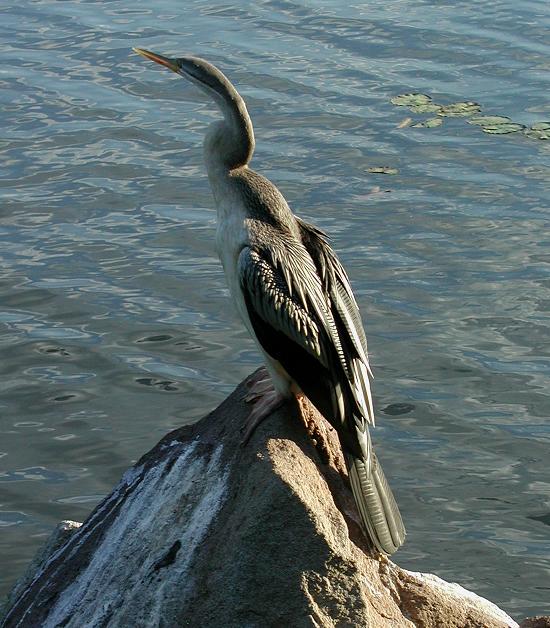 Anhinga melanogaster, Darter
Anhinga melanogaster, Darter
Phylum: Chordata Class: Aves Family: AnhingidaeGreyish-brown to blackish wth long thin, kinked neck; large rounded tail and thin rapier-like beak. Male (below): Blackish with pale-stripe on cheek and neck, chestnut patch on throat and neck. Female (at left): Greyish above, whitish throat and dark-edged facial stripe.
They are also known as the Snakebird as they swim with their bodies submerged, with just the neck sticking out of the water and stab fish with their bills. Habitat: Saltwater and freshwater wetlands including most of Australia except arid ceter. Length: 90 cm.
Photographed near the UQ Pond.
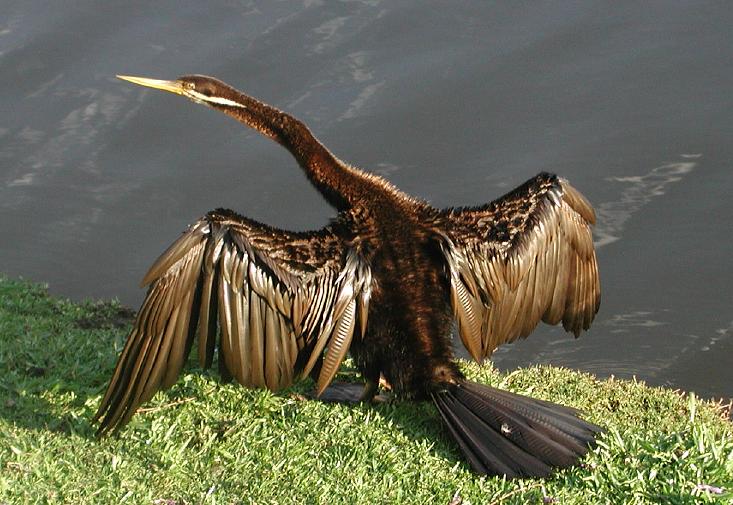
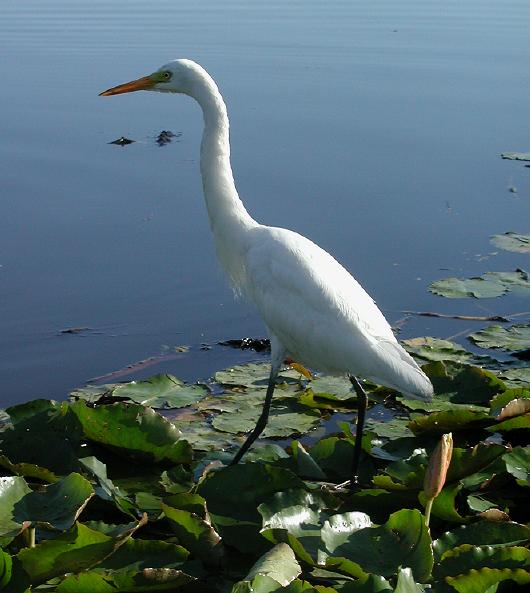 Ardea intermedia, Intermediate Egret
Ardea intermedia, Intermediate Egret
Phylum: Chordata Class: Aves Order: Ciconiiformes Family: ArdeidaeThe intermediate egret has a white back, yellow beak, and dark grey legs. Breeding adults have green facial skin and an orange beak. They are found in low-lying areas such as swamps, lakes, ponds, and streams. Their range includes northern, eastern, and southern Australia as well as Malaysia, New Guinea, Africa, and Japan. Length: 64 cm.
Photographed near the UQ Pond.
 Porphyrio porphyrio, Purple Swamp Hen or Purple Gallinule
Porphyrio porphyrio, Purple Swamp Hen or Purple Gallinule
Phylum: Chordata Class: Aves Order: Gruiformes Family: RallidaeThe range of the Purple Swamp Hen includes southern Europe, Africa, India, Southeast Asia, New Guinea, Melanesia, western Polynesia, as well as Australia and New Zealand. They are not really purple at all but, for the most part, a deep almost iridescent indigo blue. The back and wings are black with a greenish gloss and the undertail coverts are pure white. They have a large scarlet bill and orange-red legs. Their diet is a wide variety of swamp and pasture vegetation and also insects, frogs, small birds and eggs. Length: 45-50 cm.
Photographed near the UQ Pond.
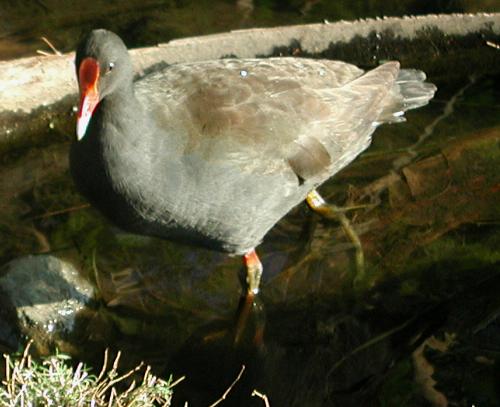 Gallinula tenebrosa, Dusky Moorhen
Gallinula tenebrosa, Dusky Moorhen
Phylum: Chordata Class: Aves Order: Gruiformes Family: RallidaeMoorhen's bodies are very dark brown above and grey below. On their foreheads they have a large redsheild. Their beaks have yellow tips. Their legs are yellow.
Dusky Moorhens are commonly seen in freshwater wetlands and ornamental lakes (as here) throughout the region. There range includes south and easten Australia as well as Tasmania. Length: 42 cm.
Photographed near the UQ Pond.
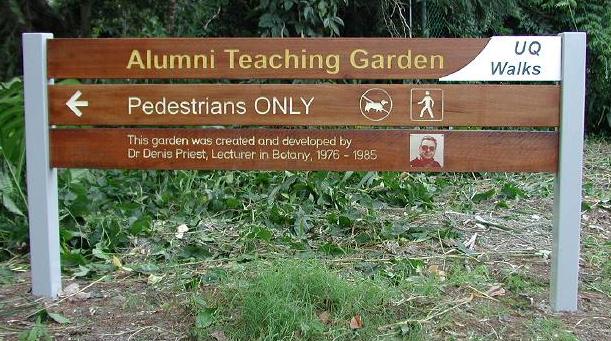 Another one of the walkways is through a "teaching garden" or mini-rainforest, complete with
sprinklers to keep the vegetation moist. See the photos below
Another one of the walkways is through a "teaching garden" or mini-rainforest, complete with
sprinklers to keep the vegetation moist. See the photos below
Photographed in the Teaching Garden.
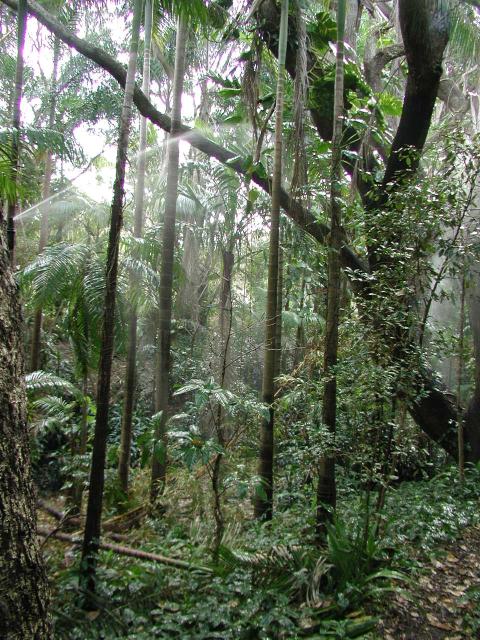
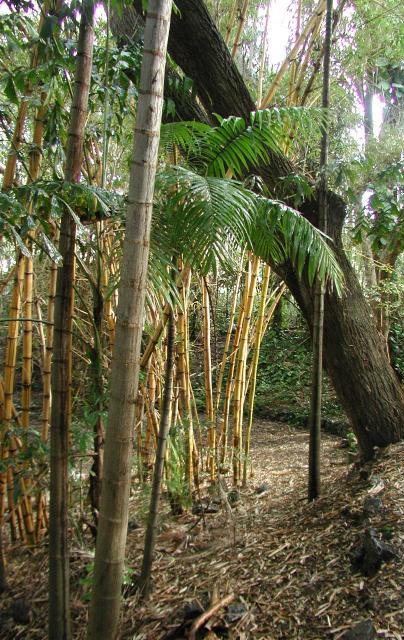
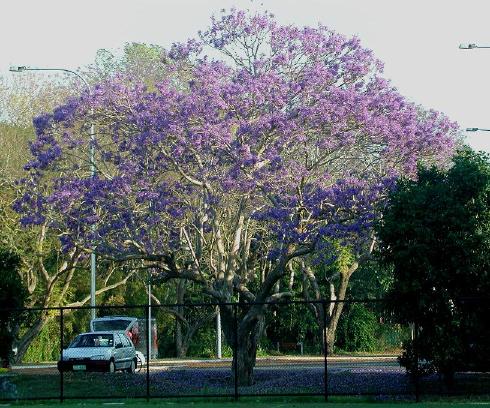 Family: Bignoniaceae
Family: Bignoniaceae
Jacaranda mimosifolia
The Jacaranda is originally native of South America, specifically Argentina. The tree has adapted well to Australia and the warmer parts of southern Africa.
Photographed across from the The Teaching Garden.
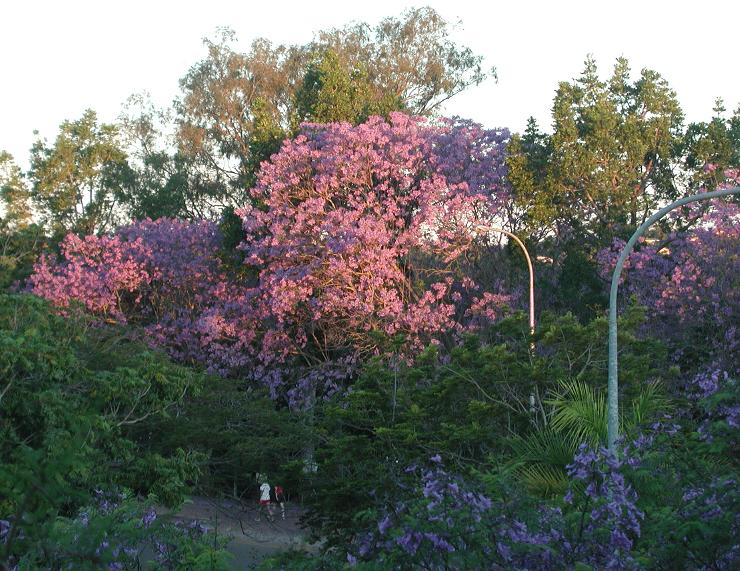
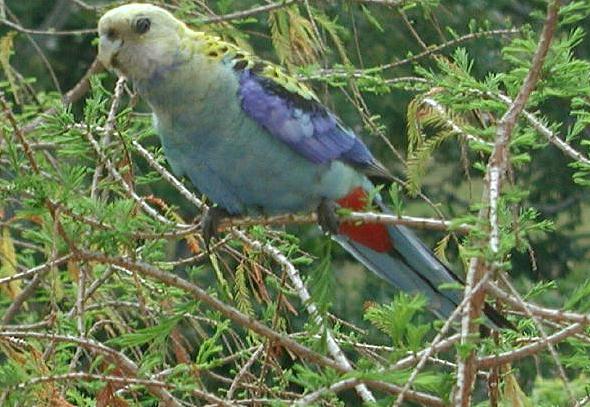 Platycercus adscitus, Pale-headed Rosella
Platycercus adscitus, Pale-headed Rosella
Phylum: Chordata Class: Aves Family: PlatycercidaeLength: 32 cm.
Photographed at Women's College.
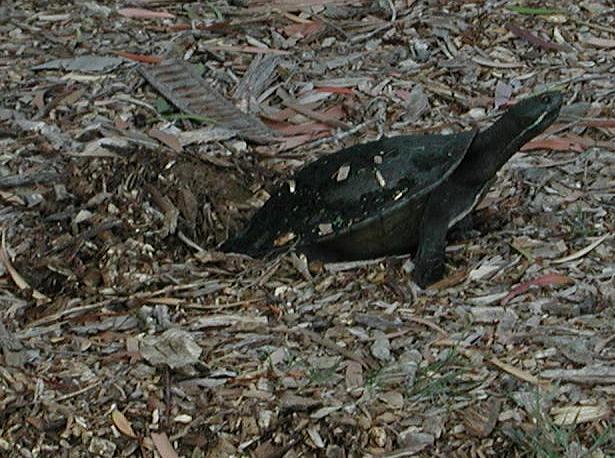 Emydura signata, "Brisbane Short-necked Turtle"
Emydura signata, "Brisbane Short-necked Turtle"
Female laying eggs. The most common turtle in the Brasbane catchment area. Length: 20 cm.
Photographed near the UQ Pond.
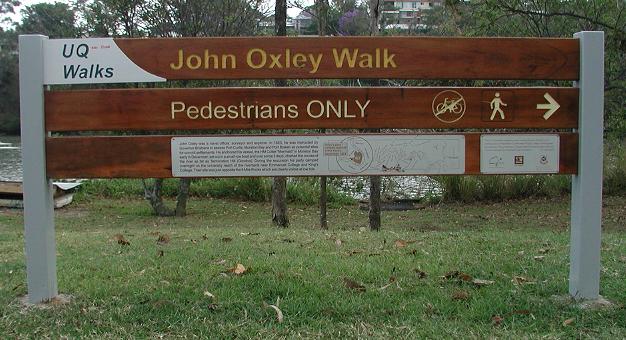 The John Oxley Walkway is the longest on the campus. It runs about 2.5 km along the Brisbane
River which forms much of the boundary of the UQ St. Lucia Campus.
The John Oxley Walkway is the longest on the campus. It runs about 2.5 km along the Brisbane
River which forms much of the boundary of the UQ St. Lucia Campus.
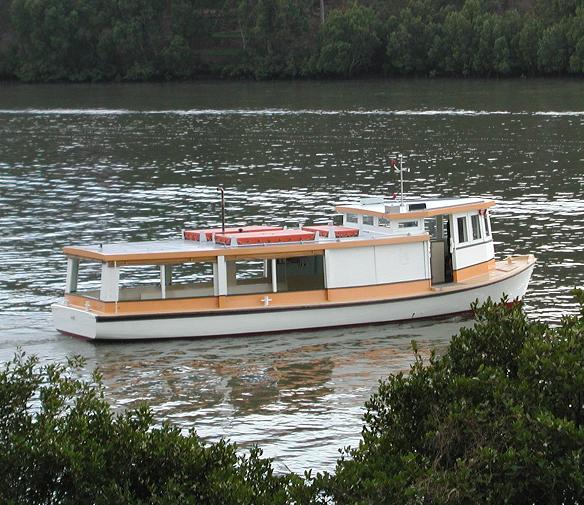 There are few bridges across the Brisbane River once one is out of the central buisiness
district. Cross-river ferries like this one and the the City Cat provide ways for commuters to
cross the river.
There are few bridges across the Brisbane River once one is out of the central buisiness
district. Cross-river ferries like this one and the the City Cat provide ways for commuters to
cross the river.
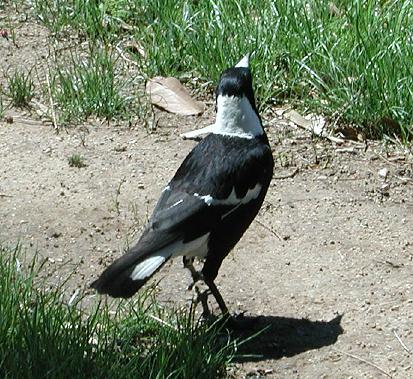 Gymnorhina tibicen, Australian Magpie
Gymnorhina tibicen, Australian Magpie
Phylum: Chordata Class: Aves Family: CorvidaeLength: 38 cm.
Photographed along the John Oxley Walkway.
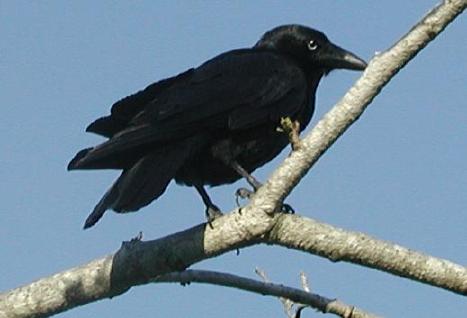 Corvus orru, Torresian Crow
Corvus orru, Torresian Crow
Phylum: Chordata Class: Aves Family: CorvidaeLength: 48 cm.
Photographed near the UQ Pond.
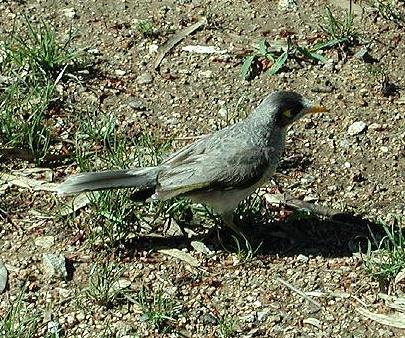
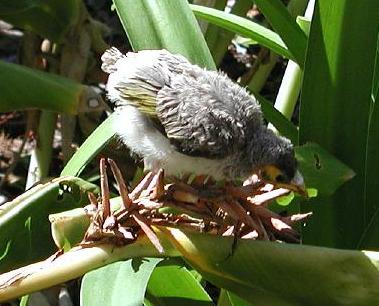
Manorina melanocephala, "Noisy Miner, "Mickey""
Phylum: Chordata Class: Aves Family: Meliphagidae
Adult and young: Photographed along the John Oxley Walkway.
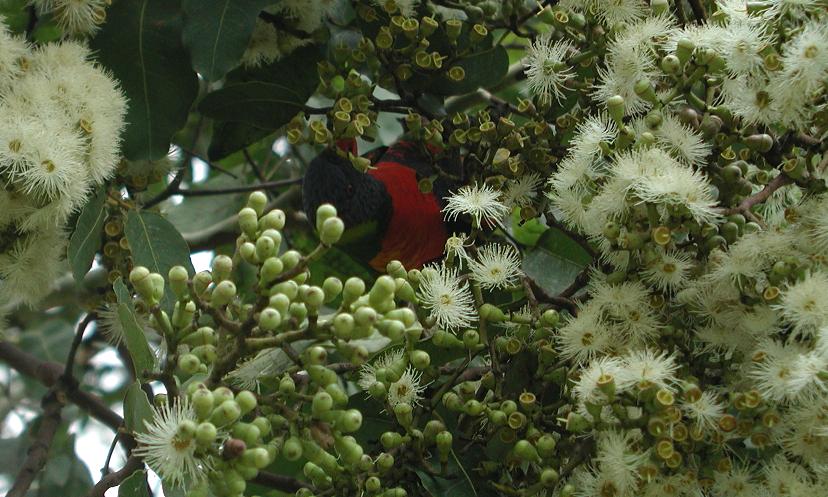
Egret photographed at the UQ Pond.